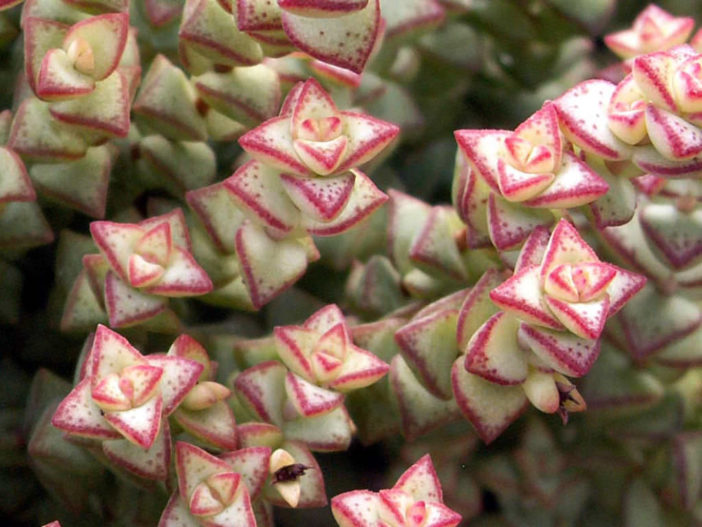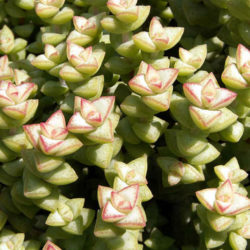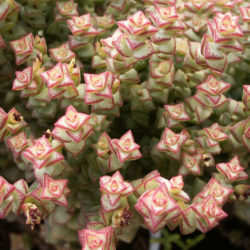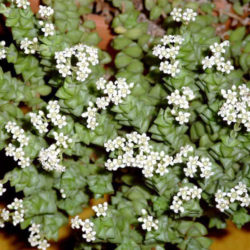Scientific Name
Crassula rupestris subsp. commutata (Friedr.) Toelken
Common Name(s)
Rosary Vine
Synonym(s)
Crassula commutata
Scientific Classification
Family: Crassulaceae
Subfamily: Crassuloideae
Genus: Crassula
Description
Crassula rupestris subsp. commutata is a small much-branched succulent shrub with thin stems, fleshy near the growing tip, but rather woody lower down. It grows up to 12 inches (30 cm) tall. Leaves are grayish, hardly fused, up to 0.4 inches (1 cm) long, and up to 0.15 inches (0.4 cm) wide. The leaf margins turn a brilliant red or yellow during the summer months. Flowers are white to pale pink, star-shaped, and up to 0.25 inch (6 mm) across and appear grouped in clusters from spring to summer.
This plant is easily confused with Crassula brevifolia but can be distinguished by its spreading leaves not longer than 0.4 inches (1 cm).

Hardiness
USDA hardiness zone 9b to 11b: from 25 °F (−3.9 °C) to 50 °F (+10 °C).
How to Grow and Care
Crassulas are easy to grow, but they are susceptible to mealy bugs and fungal diseases. As with all succulents, overwatering is sure to be fatal, so err on the side of too dry rather than too wet. Never let your Crassula sit in water. If you water from beneath by letting the plant sit in a saucer of water, make sure to pour off any excess water after a few minutes.
Crassulas are generally started by division, offsets, or leaf cuttings. Plants can be easily propagated from a single leaf: sprout leaves by placing them into a succulent or cacti mix, then covering the dish until they sprout.
Repot as needed, preferably during the warm season. To repot a succulent, make sure the soil is dry before repotting, then gently remove the pot.
See more at How to Grow and Care for Crassula.
Origin
This species is native to Namibia and South Africa.
Links
- Back to genus Crassula
- Succupedia: Browse succulents by Scientific Name, Common Name, Genus, Family, USDA Hardiness Zone, Origin, or cacti by Genus
Photo Gallery
Click on a photo to see a larger version.



